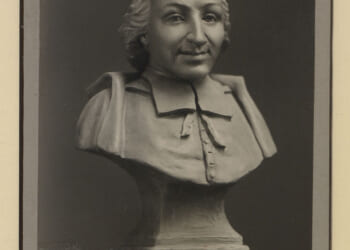Recent stories of note:
“‘Edgar Allan Poe’ Review: The Soul Within the Shadow”
Meghan Cox Gurdon, The Wall Street Journal
Few American poems are so recognizable to the public as Edgar Allan Poe’s “The Raven.” (Frost’s “The Road Not Taken” is the other top contender.) And Poe’s dark short stories are nearly as well-known: think “The Tell-Tale Heart” or “The Cask of Amontillado.” Like Poe’s most famous works, his life was grim—plagued by alcoholism and riddled with lost loves—and brief, with the writer dying at only forty. But casual fans seeking to learn more about his biography, Meghan Cox Gurdon writes for The Wall Street Journal, might do better than the recent volume out from University of Virginia Press (the press of Poe’s alma mater), which is weighed down by detail at the cost of smooth prose.
“Luther’s unruly disciples”
Len Scales, The Times Literary Supplement
In the face of the German Peasants’ War of 1524–25, the violent uprisings against German nobility inspired by Protestant principles of freedom, Luther thought the rebels misunderstood his radical teachings—they’re purely spiritual!—and implored them to be peaceful. So in 1525, he published the tract Against the Murderous, Thieving Hordes of Peasants, in which he called for the peasants to be “sliced, choked, stabbed, secretly and publicly, by those who can, like one must kill a rabid dog.” Peaceful indeed. The poorly organized rebels were, as Luther wished, brutally squashed, since their aristocratic opponents had better arms and far more military experience, with likely a hundred thousand peasants dead when all was said and done. In The Times Literary Supplement, Len Scales reviews a new book on the uprising that evocatively invites readers into German-speaking Europe in the early sixteenth century, but whose historical conclusions are colored by the fads and fashions of the early twenty-first.
“Why was this fêted Mexican painter left out of the canon?”
Joanna Moorhead, The Spectator
Many artists of the nineteenth century were concerned with the relationship between mankind and nature, in part because this is the perpetual ken of artists, with their task of mimicking reality, and in part because the nineteenth century saw industry transform the landscape that mankind lived in. The Barbizon school, fleeing dirty, crowded Paris for the nearby countryside, might come to mind, or Monet and his Gare Saint-Lazare series. Less likely to occur is José María Velasco, a Mexican landscape painter celebrated in his home country but barely known outside of it. Velasco captured Mexican landscapes with paintings that hint at the coming smokestacks and development but preserve the overwhelming awe the artist clearly felt for his country’s vistas, some of which are no longer recognizable. An exhibition of Velasco’s work at London’s National Gallery is the first outside of Mexico in nearly a quarter of a century and, according to Joanna Moorhead of The Spectator, is well worth the visit.















